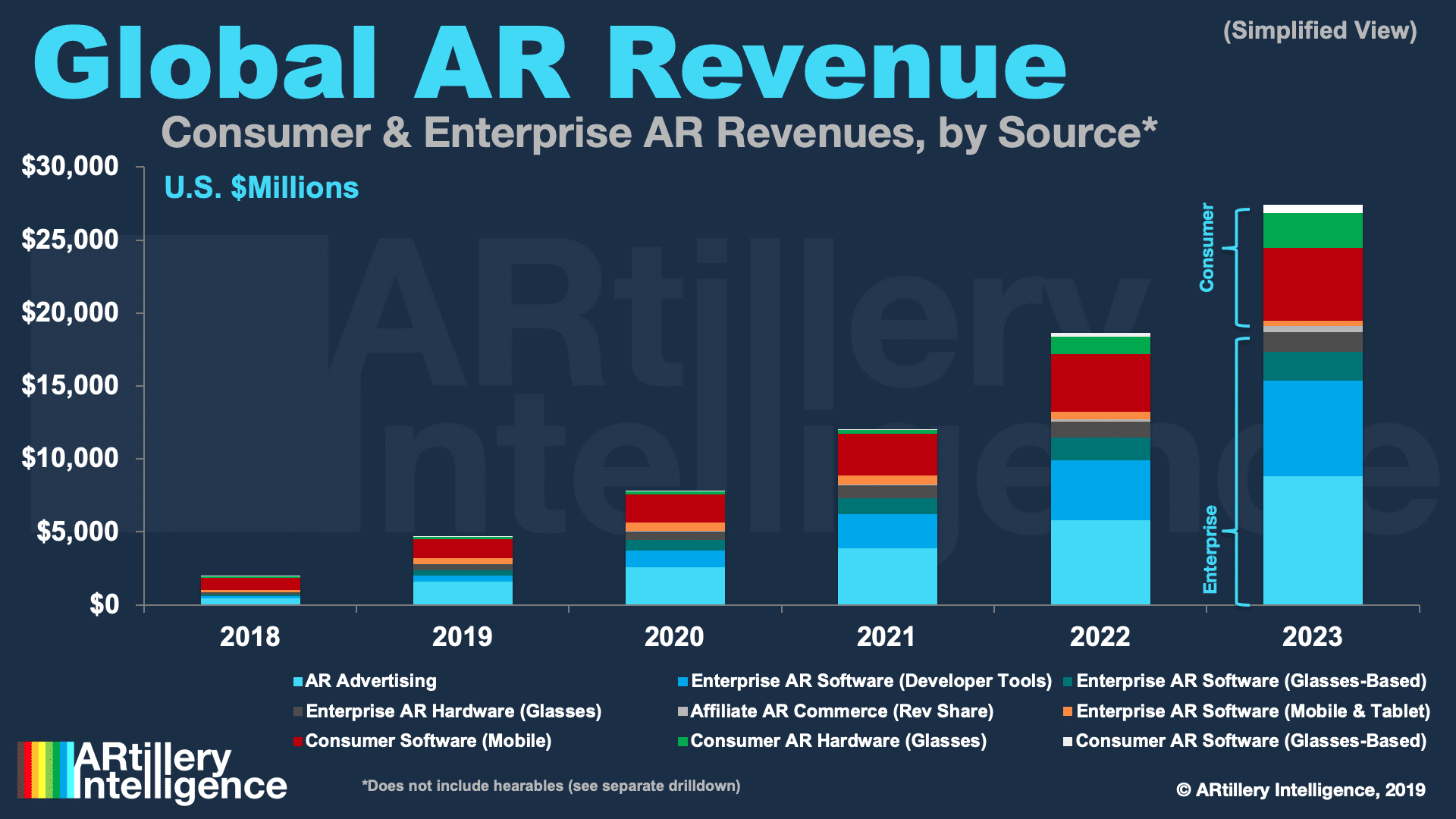
This post is adapted from ARtillery Intelligence’s report, Lessons From AR Revenue Leaders, Part II: Niantic. It includes some of its data and takeaways. More can be previewed here and subscribe for the full report.
A lot can be learned from consumer AR’s early leaders. What are they doing right? How are they engaging users? And how are they making money? These are key questions in AR’s early stages, as there’s no standardized playbook and lots of experimentation underway.
This exercise includes pinpointing fitting AR use cases, as well as more granular strategies around user experience (UX). What types of AR interactions resonate with consumers? And what best practices are being standardized for experience and interface design?
Equally important is the question of AR monetization and revenue models. Just as user experience is being refined, questions over what consumers will and won’t pay for are likewise being discovered. In-app-purchases is the prevailing model, inherited from mobile gaming.
Niantic is one company leading the way with all of the above. It has built a real revenue-generating business around in-app-purchases in Pokémon Go. Moreover, the Real World Platform that powers the game could be the company’s long-term play as an “AR as a Service” powerhouse.

Principles Behind the Product
Picking up where we left off last week in examining Pokemon Go’s UX, it’s time to pan back and examine some of the high-level rationale and principles that stand behind those design choices. This has materialized at Niantic from a combination of founding principles and acquired talent.
One of those people is Ross Finman. Now holding the role of AR lead at Niantic, he was acquired along with Escher Reality and has a reputable background in building AR products in the field’s relatively short lifespan. It’s his job to steward the AR components of Niantic’s road product map.
In doing so, Finman contends that AR resides in lower portions of the stack as an enabling technology. That realization is important as it informs how AR should be developed and deployed. For example, this drives the strategy to use AR sparingly as a feature, rather than an app in itself.
“Do remember that [AR] is a technology and not an application,” he said on the AR Show. “There are things that touch on an emotional need and there’s also, on the business side, a useful need. It’s thinking through what is that application? And can AR actually speed that up? […] There are applications being explored that may not: It’s kind of like AR got shoved in there […] AR is a good component of [Pokémon Go], and it is an AR game. But people didn’t download it for AR. It’s key to know that AR can enhance the experience. It cannot create the experience. So designing AR for AR sake is a fallacy in the AR market today”

Think Native (kind of)
Along these lines, AR is most successful when it (borrowing from Charlie Fink) takes what we’re already doing and makes it better. This is aligned with the “training wheels” concept we often invoke to develop AR experiences that don’t deviate from users’ comfort and cognition.
This can be seen in successful apps of the smartphone era. Finman invokes Uber, which wasn’t that much different than a taxi service in terms of fulfilling a need and getting you to a destination. But it did it much better and eliminated pain points like hailing cabs, fraud and paying with cash.
This notably pulls back from an earlier rally cry from some pundits (including us) that AR should be “native” in terms of creating new apps that are completely unique to the technology’s capabilities. The concept is valid but baby steps need to be taken towards that goal, à la training wheels.
“Starting with an AR-first approach, I’m not sure is going to be the most successful start,” said Finman on the AR Show. “The mobile phone started as a phone, then it grew into becoming much more a part of our everyday lives […] The initial iPhone release: Everyone’s like… ‘It’s a phone, yes. It’s a music player, yes. An internet-enabled device? I don’t know what to do that.’ So start off with what people already do, and make that easier and better. There’s a small group of the population that will try out new technology for the sake of it. But it’s more for the novelty. You need to solve a need — either emotionally or in use.”

Making Users Smile
Another tactic that aligns with this thinking is to focus on the end experience versus tech specs. This approach has vaulted PSVR, Nintendo Switch (and now Oculus Quest) in their respective device classes; and is a lesson explored in Part III of this report series with Tilt Five.
Finman similarly espouses the principle that the best technology recedes into the background, rather than creating abstraction layers for the user. And in that respect, the key performance indicator that makes the most difference to him isn’t typical usage analytics, but rather smiles.
“AR, when it works perfectly, should be invisible and no one should be able to see it and recognize it,” he said on the AR Show. “And it’s more about the experience and the people. So with Pokémon Go — speaking as a technologist who spent many, many years in the computer vision space — what is most impressive is that hundreds of millions of people smiled. They enjoyed it. They caught their first Pikachu or Charmander or Squirtle in the real world […] That’s the emotional state, or it solves a problem for them. Augmented reality is a pure technology, which is interesting. But it doesn’t solve a problem by itself. It enables problems to be solved.”
Speaking of emotion and utility, Finman segments AR’s biggest value into three main categories. The first is as an instructional tool (think: assembling IKEA Furniture). The second is for visualization (think: furniture placement). And the third is to fulfill a fantasy, à la Pokémon Go.
These use cases importantly trace back to human needs and goals. The first two are utilities for productivity or saving time. The third is for entertainment and emotion, hence the smile KPI. Apps will evolve along with the hardware, like AR glasses, but these humanistic end goals will persist.
We’ll pause there and circle back next week to continue the discussion of how Pokémon Go is leading the way with AR revenues. Meanwhile, check out the full report here.
